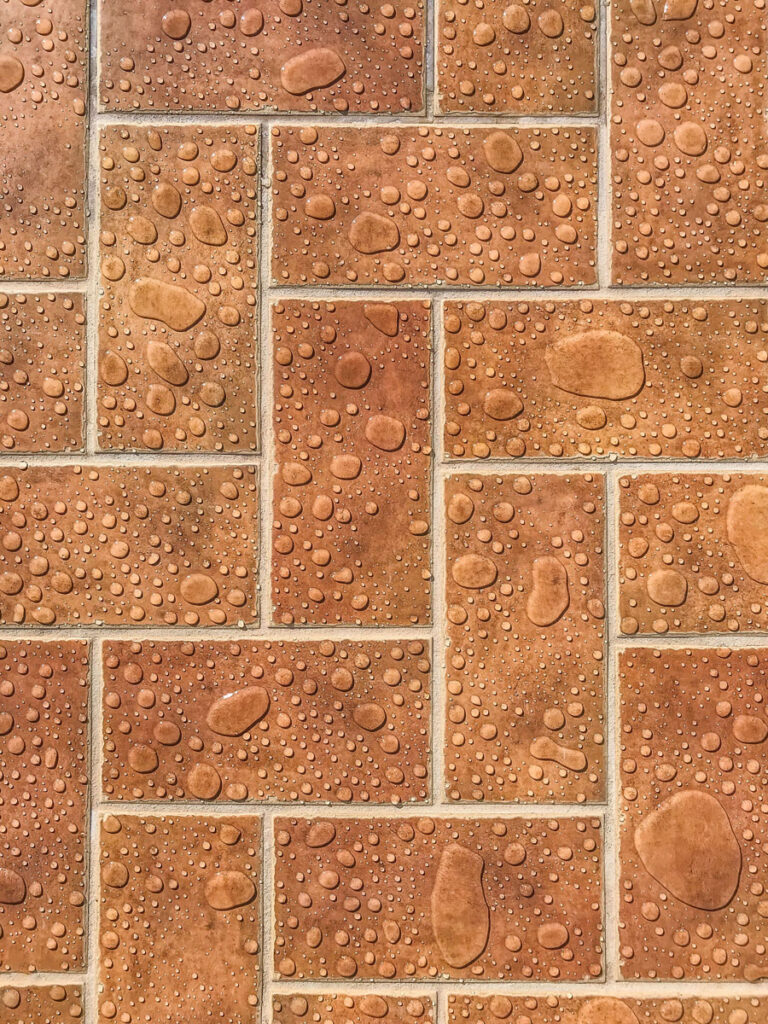Waterproofing has been used for years to protect houses from corrosion and help strengthen their structural integrity. With construction, waterproofing helps the building to create a surrounding that is safe from environmental conditions. It is commonly known to make a specific area or anything water-resistant. It prevents possible leaks and unwanted penetration of any liquids. And most of the time used in tiles, roofs, walls, and floors. Especially on outdoor facilities like swimming pools, water reservoirs, and also parking lots.
Waterproofing systems are used in different ways, which include sealants, emulsions, composites, adhesives, and various synthetic water-based resin or polymer coatings.
And as time went by, different waterproofing methods have been available to provide waterproofing services for various materials. And one of those is Nano waterproofing. Nano waterproofing is lately considered one of the most popular waterproofing methods used in automotive, textile, including food and health industries.
But before proceeding to Nano waterproofing, what are the other methods used in waterproofing?
Different Waterproofing Methods:
- Nano waterproofing
Nano waterproofing is one of the newest waterproofing methods that were popular in residential houses or buildings. The idea of nano waterproofing has also been popular in shoe sprays, textiles, cars, and other products. It uses nano-sized particles to penetrate the most minuscule of cracks and spaces to bond them with particles to create a superior and long-lasting durable coating. - Bentonite waterproofing
Bentonite is clay made from volcanic ash that has submerged in seawater. Bentonite provides waterproofing capabilities by swelling for almost 15 times its dry volume when it absorbs water. The swelling is caused by the bentonite’s molecular structural form, which comprises expansive sheets that can expand based on the grading and clay compositions. - Liquid waterproofing
Liquid waterproofing is the process of making a surface or object water-resistant in given conditions by applying a liquid coating to it. It is easy to apply and provides long-lasting protection to metals, wood, concrete, and other surfaces. It works best on large surface areas like rooftops, cemented lots, and other building structures. - Bitumen waterproofing
Bitumen is more popularly known as asphalt. It is a black sticky substance and is waterproof. It is common in big structures, like corporate and residential buildings. It is rolled under the roof to prevent passage or possible water leakages. - Rubber waterproofing
Waterproof rubber completely rejects liquid. It is used not only in concrete areas but also in wooded areas. It is strong enough to be used in extreme areas that need waterproofing. It is said to be highly resistant to aging and UV rays. - Cementitious waterproofing
Cementitious waterproofing coatings are seamless coatings used to provide positive and negative side waterproofing protection on concrete surfaces. They prevent damage from water infiltration and are resistant to molds. - Waterproofing sealer and sealant
A sealer is a transparent sealer that penetrates the surface of dry materials to help prevent moisture and water damage. It can be applied to wood, concrete, brick, masonry, canvas, stucco, and other substrates.
Based on all methods mentioned, how does Nano waterproofing become different from all the other methods? And why can it be used in many industries?

How Does Nano Waterproofing Work?
Nano waterproofing is used with Nanotechnology. Nanotechnology has been applied in waterproofing to treat substrates and become repellent to water in a liquid state but simultaneously allowing water in a gaseous state to move in and out. Nano waterproofing creates a waterproof layer that allows the water at the surface to evaporate out of the pores, keeping it from internal water damage issues.
The properties of the Nano waterproofing were made up of Nanoparticles. They are small and cannot be seen by the eyes. These particles are durable and have highly UV-resistant and weather-resistant features, which prevent them from breaking down because of unwanted situations.
It is far from the traditional waterproofing membranes. The traditional waterproofing membranes usually lose effectiveness under the heat by breaking down under extreme temperatures.
Where Can Nano Waterproofing Be Applied?
- Food and health:
Nano waterproofing is very useful in the food and health industry. It helps prevent areas including counters and kitchen stations from preventing bacterias from growing. Nano waterproofing helps the furniture to be easier to disinfect, especially at this time of pandemic where cleanliness is most important to guests. - Automotives:
Nanotechnology in cars and other automotive vehicles has been popular. It helps them prevent dirt, scratches, UV rays and leaves a shiny clean finish to the applied area. - Construction:
Nano waterproofing can also be applied to elements and building materials on the outside. It keeps it safe from dirt and sudden corrosions. - Textile:
Nano waterproofing on textile is also one of the most growing ways to help textile products be cleaned easily. Like, clothes and shoes. It is repellant to dirt such as mud, coffee spills, stains, and other forms of liquid.
Pros and Cons of Nano Waterproofing in Your House
Pros
- Nano waterproofing is highly hydrophobic
- It has lighter and stronger components
- It is a low maintenance coating
- Air pollution reduction
- Reduced environmental impact
- Improved wear resistance vs other waterproofing coatings
- Optical transparency
- Last longer than usual waterproofing methods
- Saves more time and energy
- One time expense
Cons
- Could be toxic during long exposures; which is why liquid nano waterproofing is more advisable than powder
- Can be more expensive
As time progressed, technology has made ways to help people protect their households in easy ways and more convenient methods. Therefore, this nano waterproofing technique may become something significant for the future and even in the present. Not just waterproofing for households, but also materials that may need the advantages and benefits of this technology.
House and Development Board (HDB) are also seeking better ways to improve waterproofing methods that may help the community considering nano waterproofing as one of their options to avoid costly repairing methods and unnecessary reconstructions.


